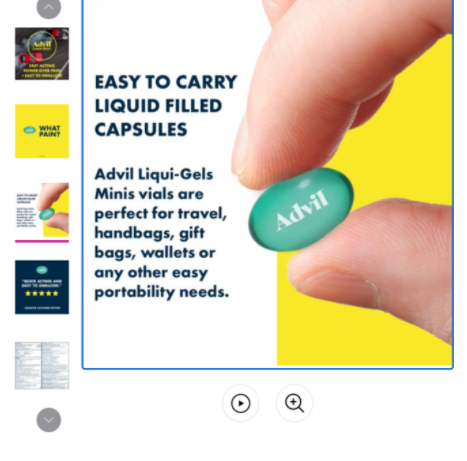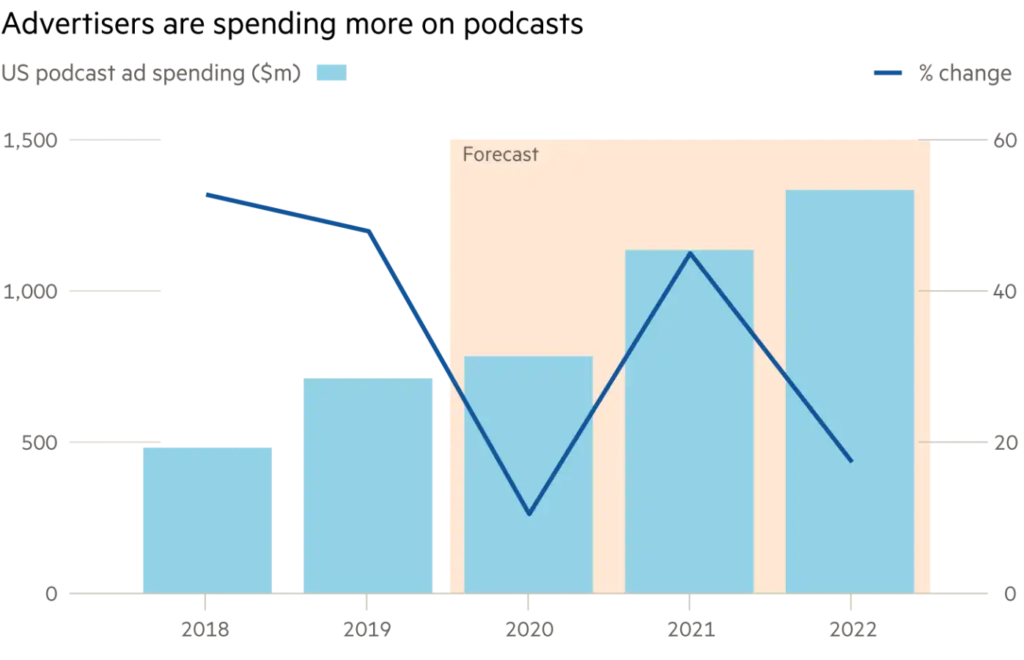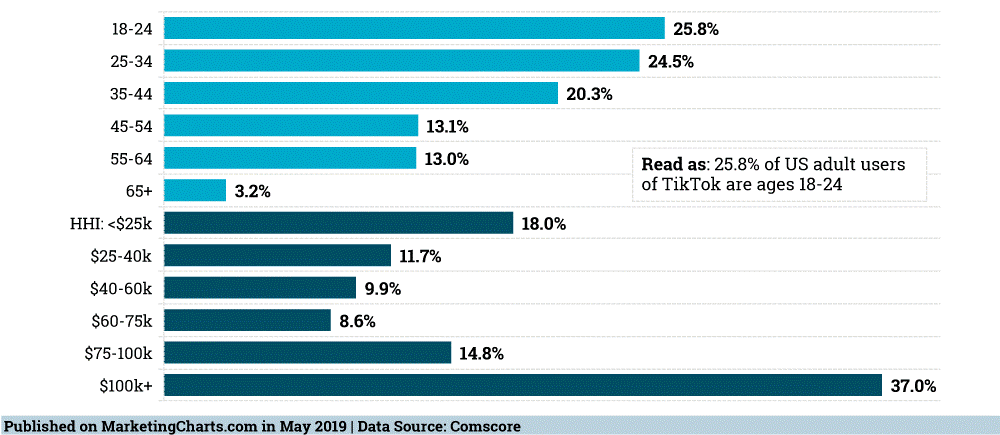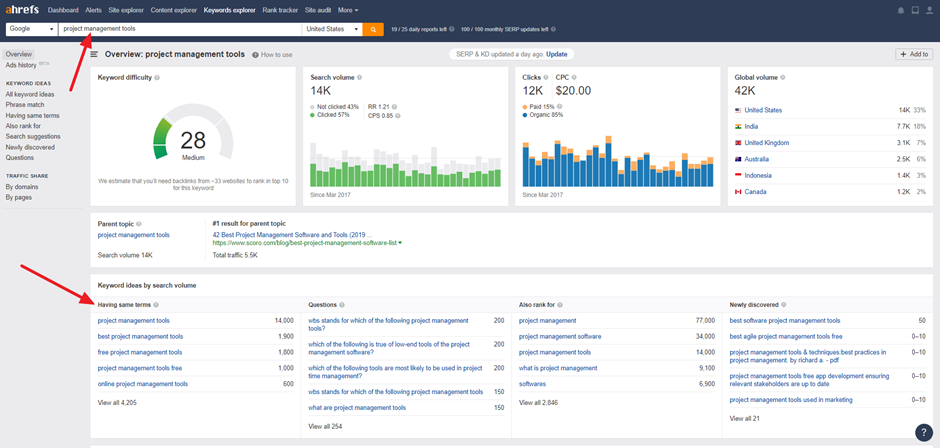What is the ‘People Also Ask’ Box?
People Also Ask (PPA) boxes are a dynamic search engine results page (SERP) feature in Google search engine that contains a set of questions related to the original search query. On clicking a question, the box expands to display a text snippet with a brief answer to the question. It also shows the URL for the text source and a shortcut link for performing another Google search for that question.
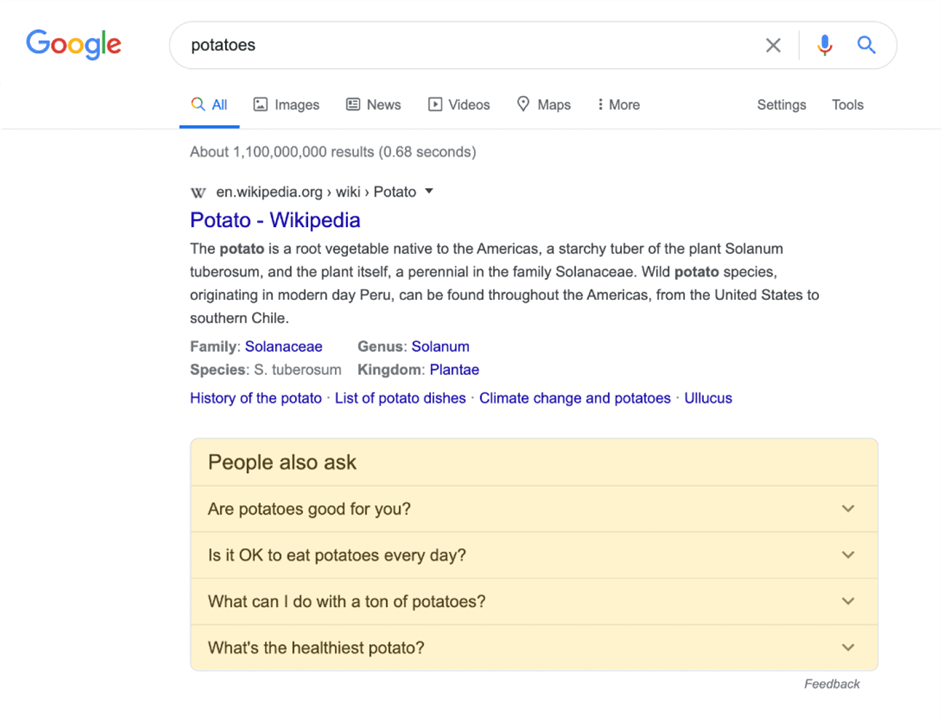
Source: Google
It is important to note that initially, a People Also Ask box contains a set of four questions, however with a click on each question, about two or more additional questions to the PAA box. Hence, since questions are being infinitely added to the box, the PAA boxes are ever-expanding.
As a business or brand, being featured as an answer to People Also Ask (PAA) questions is a good opportunity to get ahead of your competition and hook the interest of your target audience by increasing your visibility in Google.
Types of Queries That Can Trigger PAA
The most common types of queries that trigger PAA boxes are those that start with question words, such as:
- “what”,
- “why”,
- “when”,
- “where” and
- “who”.
According to SEMrush, queries starting with these terms trigger PAA 86% of the time.
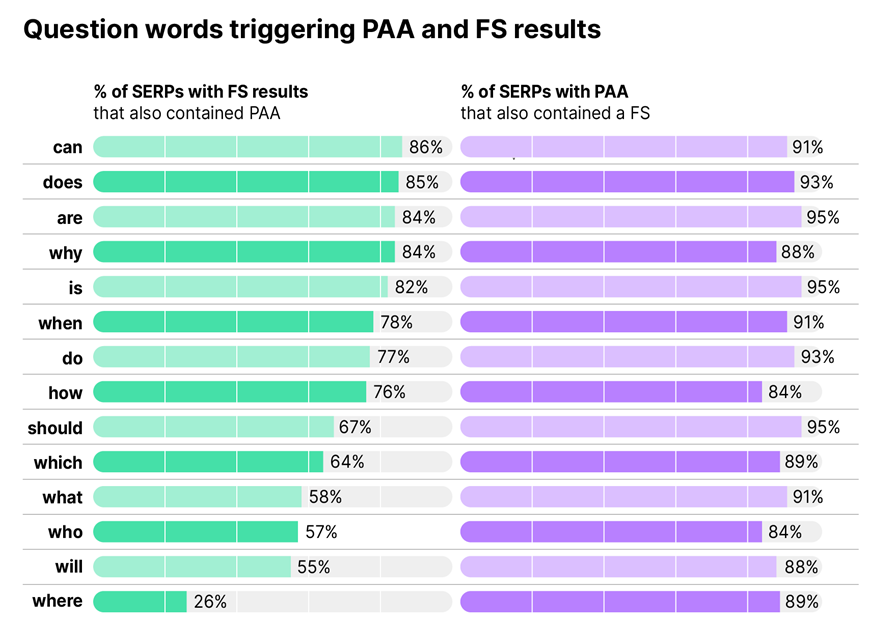
Source: SEMrush
As with featured snippets (FS), the PAA data suggest it is worth structuring content around the question it intends to answer, rather than relying on the reader to understand the context of the article. This format makes questions digestible in a “standalone” format that can then be used both within featured snippets and People Also Ask boxes.
Opportunity ‘People Also Ask’ Offers as an SEO Strategy Tool
While the frequency of PAA results differs from one country to another, the percent of SERPs with PAA results is much higher on mobile devices than in desktop. With the UK and Australia leading for desktop searches, Singapore taking the lead in mobile device searches.
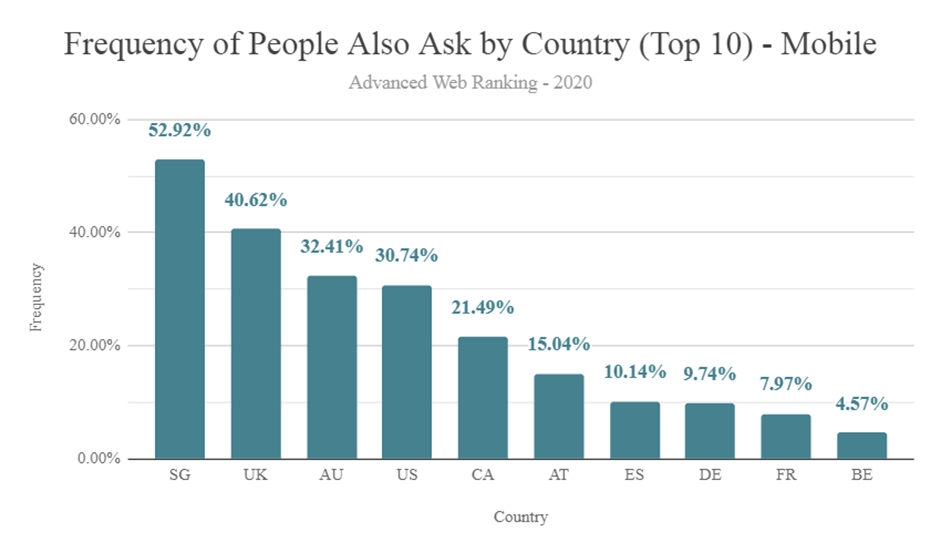
Source: Advanced Web Ranking
This means that you need to either make your site more mobile-friendly or do some research before deciding if it’s worth adding it to your SEO strategy. However, to make most of the opportunities that PAA offers you for more visibility on Google, here are five facts you need to know.
- PAA can occupy different positions on the SERP. Understanding the implications of the varying positions of PAA in the SERPs influences organic results’ click-through rate (CTR), especially on mobile, hence optimizing your mobile site becomes necessary.
- PAAs have no limit as it has the ability to trigger a potentially infinite number of questions on the topic of interest. From an opportunity outlook, the number of questions you can scrape to take advantage of will vary.
- PAAs can trigger video results that are more interactive and explanatory for a query: From an opportunity viewpoint, you can optimize your YouTube and video results to be eligible to appear in PAAs.
- PAA questions are frequently repeated for the same search topic and also trigger featured snippets. From an opportunity stance, your PAA listings can trigger featured snippets and also have the possibility to cover a portfolio of different keyword permutations.
- PAAs have a feedback feature. From a position of opportunity, if you observe that PAA listings (for questions you are trying to appear for) are inaccurate, you can flag it to Google.
How to Leverage the ‘People Also Ask’ Feature
With the rise of PAA and ever-increasing competition for the spot in SERP features, you need to roll out a viable action plan for appearing within the PAA box. Since there are several ways to incorporate PAAs into your SEO strategy, here are the key steps to follow to leverage the power of PAA:
1. Have a general idea of existing SERP features
You can begin by considering if your target keywords trigger any SERP features by using a tool like Position Tracking. While using the tool, ensure you apply filters and specifically choose the PAA feature.
2. Discover missing PAA opportunities
To verify if your site is missing any PAA opportunities, use the Organic Research tool to identify the keywords your domain is already ranks but are not generating PAA results for you in Google.
3. Take advantage of your competitor
With the help of Organic Research, you can spot which of your competitors’ high-ranking keywords don’t make them appear in SERP features, and optimize by occupying the available space.
4. Generate content ideas to earn PAA SERP features
Use tools like AnswerThePublic and AlsoAsked to generate ideas and create content. This tool automatically presents Google’s PAA data which includes the tree of subsequent results when questions get clicked. After copying and pasting a keyword you want to target into the Keyword Overview tool, you will see the option to get SERP copies with PAAs generated for this keyword.
5. Verify if your Content meets SEO requirements
To boost the prospect of your content making it into PAA boxes, ensure your copy addresses a specific user query from an SEO position.
How to Optimize Content for People Also Ask
PAAs are generated by Google’s algorithm; hence there is no dedicated markup available for getting included in SERPs as answers to PAA questions. However, here are some suggested influences on the PAA answers:
- Well-researched topic: When writing about a topic, research it thoroughly and ensure you’re answering all the key questions people have. Thorough keyword research and tools like AlsoAsked will help here.
- Enhanced readability: When you’re writing content, use a conversational Q&A style of writing and answer questions in a succinct and easily digestible way.
- Keep contents updated: And finally, once you’ve written your content and published, keep it up to date! Occasionally go back to step one and research new questions you could be answering or try to better optimize your existing content based upon who is currently capturing the PPA box.
How to Track ‘People Also Ask’ Rankings
To track the PAA rankings, several tools like STAT’s report or the ‘SERP Features’ filter in Keywords Ranking report can be used to obtain a list of terms for which you’re currently ranking in Google’s PAA boxes.
![]()
Source: Advanced Web Ranking
From the screenshot, this can be done by segmenting your keyword data by ‘My Site’ ranks + ‘People Also Ask’. Also, from the Top sites report, you can check the exact page URL ranking as PAA and the questions included in the PAA box as shown below.

Source: Advanced Web Ranking
Tips on How to Maximize ‘People Also Ask’ SEO Opportunities
- Extract PAA listings
- Understand what type of results such PAA questions are triggering
- Address questions in your content by providing short, but complete questions and answers
- Create or re-optimize your content by writing in plain, non-salesy, language
- Test schema on your page.

